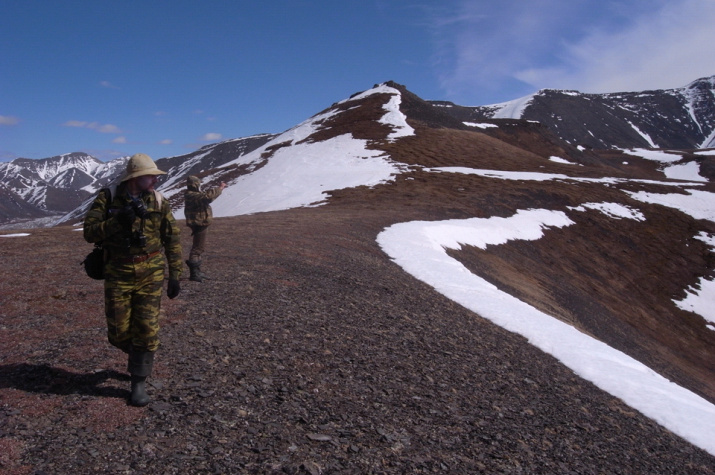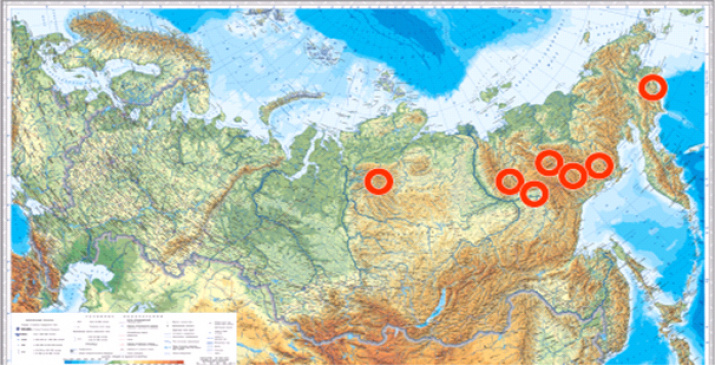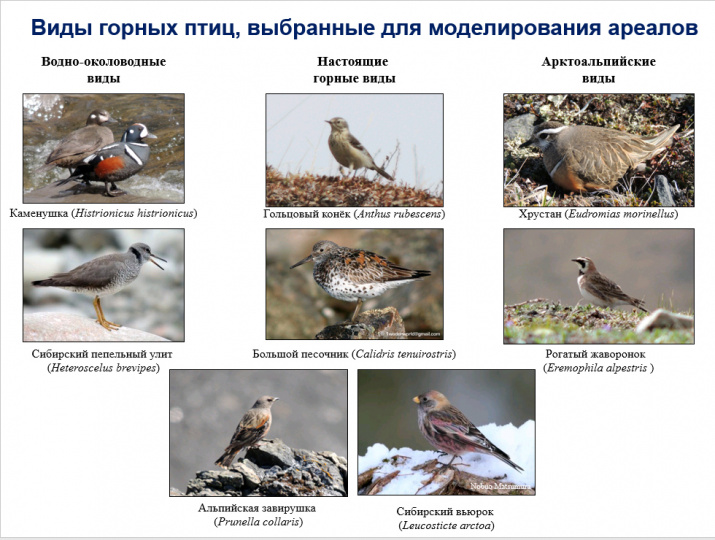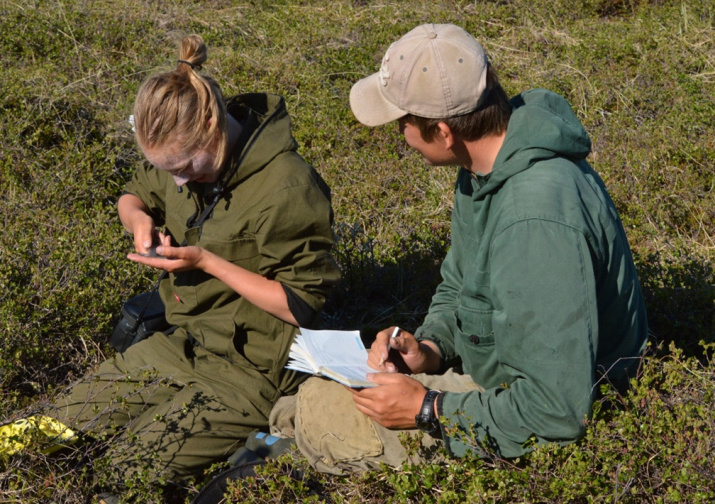The participants of the project “Birds of the Mountains of Northern Eurasia” completed research in remote mountainous areas of Northeast Asia. For over thousands of kilometers, ornithologists have studied in detail the species composition and behavior of birds.
The work was carried out in remote areas of the Putorana Plateau, the Verkhoyansk Range, the Chersky Range, the Suntar-Khayata Range , the Sette-Daban, Kolyma and Koryak Uplands. Ornithologists were there for the first time. The length of the investigated mountain regions, from west to east, amounted to 4000 km; and the area amounted to about 300,000 sq. km. Research was conducted by specialists of the M.A. Menzbier Russian Society for the Conservation and Study of Birds in coordination with the Geographical Faculty of Lomonosov Moscow State University and Putoranskiy reserve.
Scientists studied more than 150 species of birds in detail: they took an inventory, found out the structure of the population; and established the laws of the altitudinal, latitudinal and meridional distribution of birds. The research results significantly expanded the understanding of the current boundaries of habitats, residence status, and the nature of the distribution of 32 bird species in the mountains of North Asia.
Thus, the researchers found that the distribution boundary of a number of bird species runs along the Verkhoyansk Range and the Sette-Daban Range, which allows them to be considered important biogeographic boundaries within Northeast Asia. It is interesting that, outside the known boundaries of nesting ranges, scientists found 32 species of birds, 19 of them - to the north of the fixed boundaries of their distribution. The reason for this is climate change, scientists believe.
The avifauna of the examined mountains of Northeast Asia is characterized by the harlequin duck, the Siberian grey-tailed tattler , the great knot, the buff-bellied pipit , the alpine accentor, the Asian rosy finch, the rock ptarmigan , the Eurasian dotterel, the horned lark, the grey wagtail, the northern wheatear. Researchers found that in the Koryak Upland appeared uncharacteristic of this territory nesting populations of Pallas's leaf warbler, the yellow-browed warbler , the European stonechat , the Siberian accentor, the red-flanked bluetail , and thePacific swift. Previously, they lived 100-600 km to the south. In addition to them, American species of birds appeared here: the black scoter, the American wigeon, the green-winged teal, the wandering tattler, the sandhill crane.
Scientists said that for the first time they had examined the inaccessible mountainous areas of the north-west of the Putorana Plateau. They established the complete species composition of avifauna, conducted an analysis of the bird population. And they also found species characteristic of another range.
“Entire bird communities in Putorana’s bald mountains found themselves 200–400 km south from the nearest known nesting sites. For example, the nesting populations of the flat-tundra skuas (the long-tailed skua , the red-necked stint) and arctoalpine (the snow bunting) species, that are characteristic of the Taimyr Peninsula,” says the head of the project "Birds of the Mountains of Northern Eurasia", Doctor of Biological Sciences, professor of the geographical faculty of Moscow State University, Alexey Romanov.
In addition to birds, scientists studied the fauna of the mountains of North Asia. The data obtained will help to develop measures to preserve the biological diversity of the region.
The next stop on the research route is the Kuril Islands. Scientists plan to study land fauna, latitudinal limits of the distribution of species; will search for large concentrations of birds in post-nesting migrations or places of seasonal migration.
"We intend to find out how the bird migration routes ‘connect’ the Kuril Islands with the Arctic and tropical regions of Southeast Asia, and how the bird fauna of the Kuril Islands affects the large adjacent islands and continental territories," Alexey Romanov shares his plans.
Based on the results of the project, the lecture course "Biodiversity of mountain ecosystems" will be held at the geographical faculty of Moscow State University, for those who are interested in the findings of the expeditions. In addition, three scientific monographs have been published: “Avifauna of the Asian Subarctic Mountains: consistent patterns of formation and dynamics”, “Avifauna of the Putorana Plateau”, and “Birds of the North Asian Mountains: Results of 2010–2018 Research.”
"Birds of the mountains of Northern Eurasia" is one of the largest environmentally significant projects, with extensive reach and a wide range of areas of work. The main goal is fundamental scientific research and activities aimed at preserving the biodiversity of the mountains of Northern Eurasia; revealing the biogeographic patterns of the formation of the bird fauna and environmental factors in the functioning of their communities; the study of the habitats and migration routes of birds; assessing the status of their populations. The expeditions of the project involve employees, students, and graduate students of the geographical faculty of Moscow State University; and employees of the Putoranskiy Reserve, which, since 2013, has been included in the FSBI “Taimyr Nature Reserves”. The project is supported by “Transneft”.




